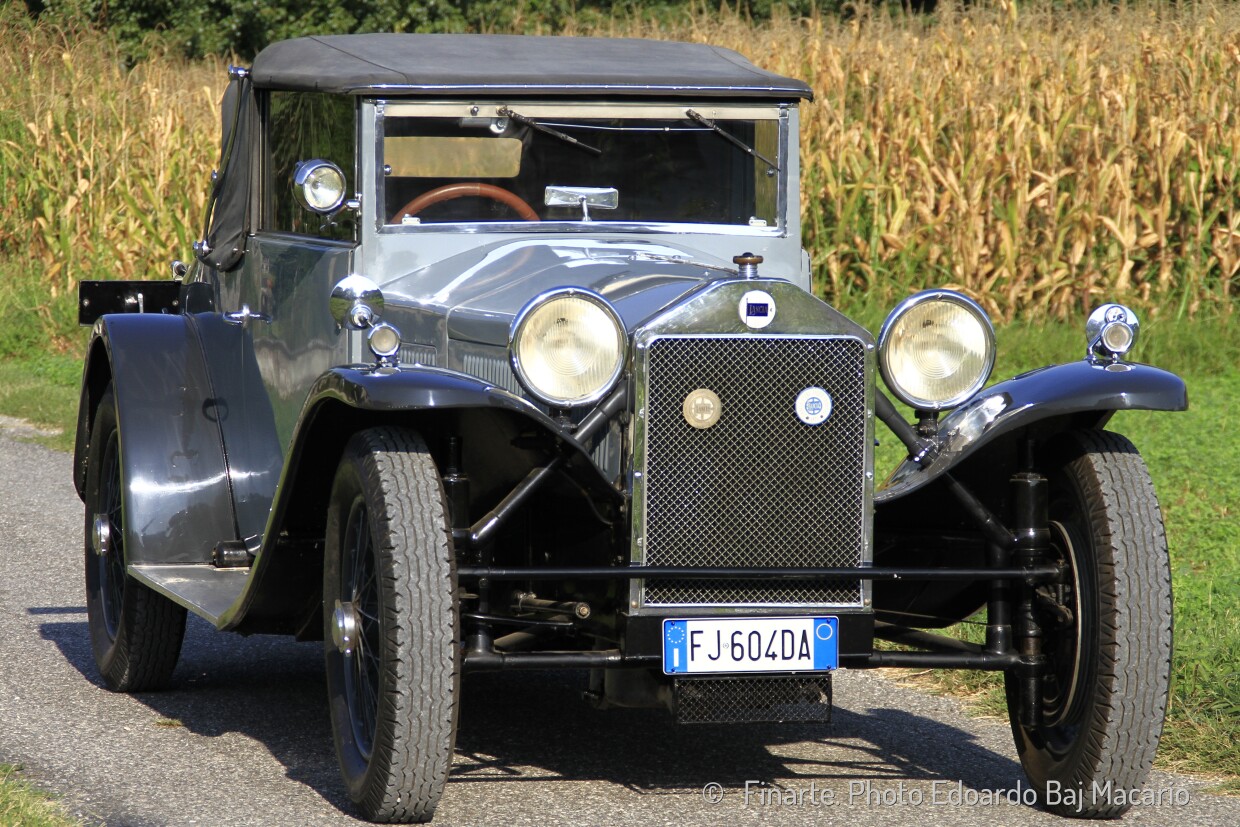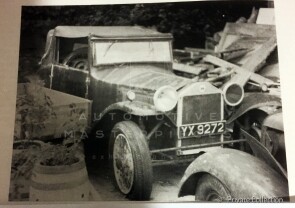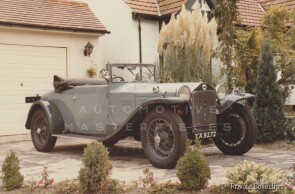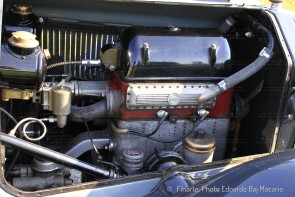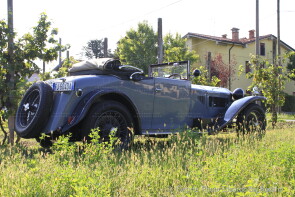
1928 Lancia Lambda Drop-head Coupé
ON/OFF
Why am I an Automotive Masterpiece?
D. Remaining cars from extremely limited production runs
1 remains of 8 produced
L. Limited edition cars
no. 8 manufactured
It is the unanimous opinion of automotive historians that the Lambda was Vincenzo Lancia's first masterpiece thanks to its numerous innovations. These included: a monocoque chassis, independent front suspension, and hydraulic dampers. Thanks to Battista Giuseppe Falchetto ingenious ideas of Vincenzo Lancia were translated into a concrete project. Displayed at the Paris Auto Salon in November 1922, the Lancia Lambda was instantly recognized as a new approach to cars. The narrow-angle aluminium Lancia V4 engine was also notable. All three displacements shared the same long 120 mm (4.7 in) stroke, and all were SOHC designs with a single camshaft serving both banks of cylinders. First engine had 13° V angle, second 14° and 3rd 13° 40'. The engine, an overhead-camshaft unit of 2,120cc, was progressively enlarged, arriving at its final 2,569 cc, 68 hp configuration in 1928. The first Lambdas had three-speed gearboxes, but a four-speed was developed in 1925. The design of the Lambda engine, under the general oversight of Battista Falchetto, was in the hands of a small group. In charge was Primitivo Rocco, responsible for all of Lancia’s engine designs, Augusto Cantarini and Quarello, the third member of the group. Lambda sporting career was restricted by the manufacturer's determination to make it a touring car, choosing displacements that sat awkwardly with the classes recognised by the AIACR. A series of special Lambda "Corsa" versions was prepared for the Coppa delle 1000 Miglia In 1927, the Strazza-Varallo crew driving one to 4th overall ahead of another driven by Pugno and Beggia. For the following edition, five “Tipo 223" torpedo-bodied versions and three special short-chassis spiders bodied by Casaro were prepared, all fitted with a special cylinder head developed by Romagnoni & Pirotta and offered as an option on the production cars. The model's commercial history can be summarized in the around 13,000 examples produced in nine series between 1922 and 1931.
The Lancia Lambda, chassis no. 19229 is a VIII series model, produced in 1928 and is matching numbers: the current engine no. 9091 is the original one. It came out of the Lancia assembly lines on June 30 as a short chassis (3.1m), type 221, it was sent to Albany coachbuilder on July 14, and registered in UK on September 20, 1928. The family of Albany coachbuilders was known in England for the construction and holding of many patents for carriages, Landeau and sleds spread all over Europe. It is believed that Albany produced seven different body styles on Lambda chassis. On the VIII series it built Weymann-type saloons, aerodynamic cars with internal drive called Airflow Stramline and the convertible Drop-head Coupés. This last particular body was built by Albany in only 8 units, and it is believed that the car with chassis no. 19229 is the only one to have survived. The world register Lambda LWR, chaired by Bill Jamieson and Joachim Griese, recognizes its rarity. The car was found in 1962 and, after a partial restoration, remained in the London surroundings until 1965, when it was purchased by Arthur Keeling who, in 1982, proceeded to a conservative restoration. Since then, it remained in the same family. Upon Arthur's death, it passed into the hands of his son George, who lovingly cared for until 2016, when the car returned to Italy. Since then, it has been followed step by step by Storicar, that defines itself as an "artisan workshop of restoration”, but the Brescia-based company is universally recognized as the Lambda specialist par excellence. The car arrived there already in excellent condition; ordinary maintenance operations and a complete service were carried out, the electrical system was redone, the dynamo and ignition were repaired. The car was presented in the Asi and Fiva commission, obtaining an excellent A classification, being considered an excellent conserved one. It has first-rate aesthetic features, painted in pastel gray with black fenders and a bright red leather interior. Many surprising details are present; the brass plaque on the sill, of the original London dealer, stands out. The car was registered in Italy in 2017.
